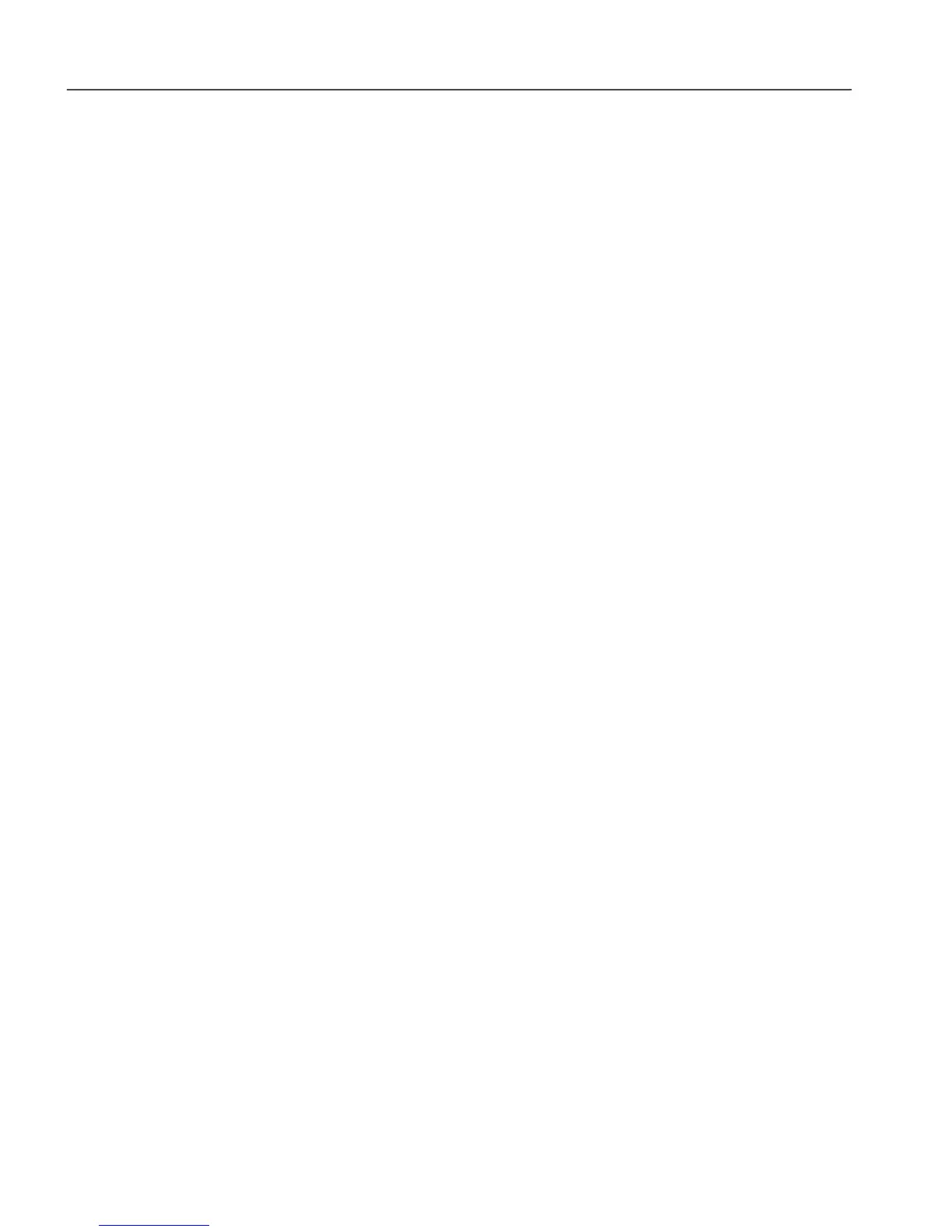Chapter 6, COMPUTER OPERATION
6-30
Curves 15 and 16 store the reference frequency in millihertz. When using the DCB
command (although not with the other curve transfer commands), both curves need
to be transferred separately. They should then be converted to two arrays of integer
values, allowing for the fact that the data points in curve 15 are unsigned 16-bit
values, while those in curve 16 are signed 2’s complement 16-bit values (although in
practice they are never negative). Finally they should be assembled into a single
curve using the following algorithm:
Reference Frequency = (65536 × value in Curve 16) + (value in Curve 15)
The computer program's subroutine which reads the responses to the DCB command
needs to be able to handle the potentially very large data blocks (200 k bytes in the
case of one 100 k curve) that can be generated.
NOTE: When using RS232 communications, the interface must be set to use 8
data bit transmission.
Fast Mode
One curve at a time is transferred, with the selected curve being dumped via the
computer interface in binary format, using two bytes per point. Data is sent using 16-
bit 2’s complement encoding, with the MSB sent first.
The value of n defines the curve to be transferred according to the following table:
n Output and range
0 X Output (±10000 FS)
1 Y Output (±10000 FS)
2 Main signal channel ADC output (digital signal monitor 1
3 ADC1 (±10000 = ±10.0 V)
4 ADC2 (±10000 = ±10.0 V)
Dual modes only:-
n Output and range
5 X
2
Output (±10000 FS)
6 Y
2
Output (±10000 FS)
7 Input to second demodulator (digital signal monitor 2)
The computer program's subroutine which reads the responses to the DC command
needs to run a program loop that continues until all the data has been transferred.
DCT n Dump acquired curves to computer in tabular format
NOTE: This command is only available when the curve buffer is set to Standard
Mode.
This command is similar to the DC command described above, but allows transfer of
several curves at a time and only operates in fixed point mode. Stored curve(s) are
transferred via the computer interface in decimal format.
In single reference mode, the DCT parameter is an integer between 1 and 131,071,
being the decimal equivalent of a 17-bit binary number. In either of the dual
reference modes, it is an integer between 1 and 4,194,303, being the decimal
equivalent of a 22-bit binary number. When a given bit in the number is asserted, the
corresponding curve is selected for transfer. When a bit is negated, the curve is not
transferred. The bit corresponding to each curve is shown in the table below:

